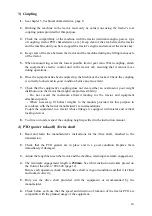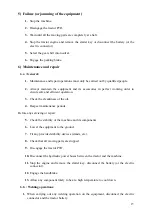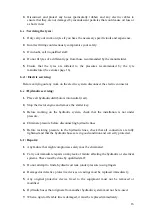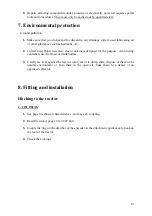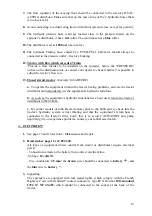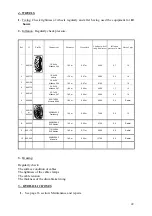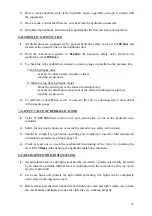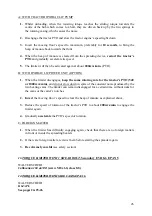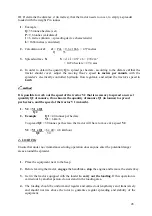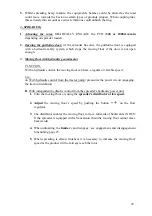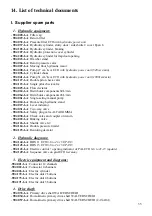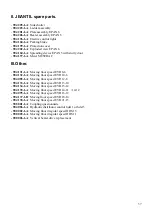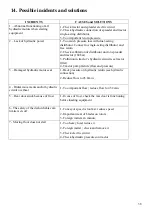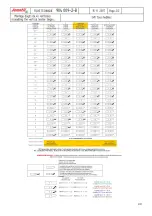
28
III. Determine the distance d (in metres), that the tractor needs to cover, to empty a spreader
loaded with the weight P in tonnes
1.
Example :
Q
=35 tonnes/hectare (set)
P
= 9,6 tonnes (calculated)
l =
6 metres (known = spreading device characteristic)
L
= 1666 metres (calculated)
2.
Calculation of
d
:
d
= PxL = 9,6 x 1666 = 457 metres
Q 35
3.
Spread surface
S:
S
= d x
l
= 457 x 6 = 2 742 m²
= 0,274 hectare = 27,4 ares
4.
In order to obtain the quantity
Q
to spread per hectare, according to the distance
d
that the
tractor should cover, adjust the moving floor’s speed
in metres per minute
with the
spreader’s electrically controlled hydraulic flow regulator, and adjust the tractor’s speed in
km/h
.
2
nd
method
It is possible to work out the speed of the tractor V2 that is necessary to spread a new set
quantity Q2 of manure, if one knows the quantity of manure Q1 (in tonnes) to spread
per hectare, and the speed of the tractor V1 (in km/h).
1.
V2 = V1 x Q1
Q2
2.
Example
:
Q1
= 40 tonnes per hectare
V1
= 6 km/h
To spread
Q2
= 50 tonnes per hectare, the tractor will have to move at a speed
V2
:
V2
=
V1 x Q1
= 6 x 40 = 4.8 km/hour
Q2
50
2 - LOADING
Ensure that under no circumstances during operation does anyone enter the potential danger
areas around the spreader.
.
1.
Place the equipment next to the heap.
2.
Before leaving the tractor,
engage
the handbrake,
stop
the engine and remove the starter key.
3.
Get in the tractor equipped with the loader
to carry out the loading
. If this operation is
carried out by another person, do not stand in the loading area.
4.
The loading should be uniform and regular and carried out lengthways and transversely
and should not rise above the rotor to guarantee regular spreading and stability of the
equipment.

